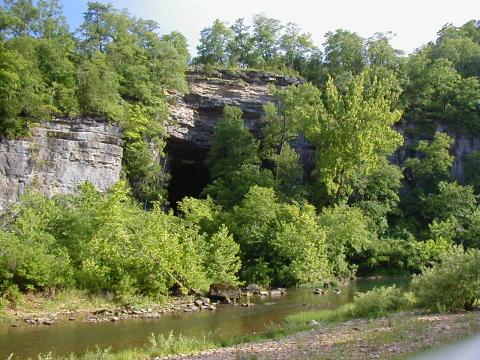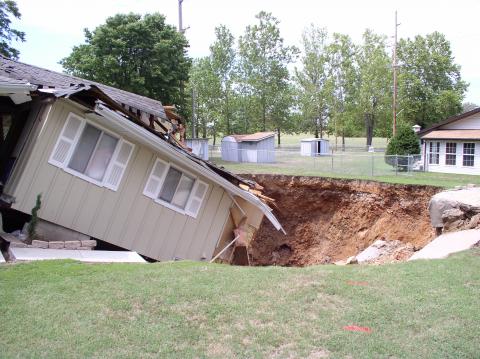Green Time TV, May 2015: Water in Missouri
Missouri has some of the most beautiful waterways in the US. They can be admired and enjoyed or they can be contaminated and polluted. May 2015 episodes of Green Time TV explore both sides of water.
Karst areas are formed when limestone-based sedimentary rock is dissolved underground. The first May episode of Green Time looks at caves, springs, sinkholes and losing streams, which are creeks where the water disappears, going under-ground. Host Don Fitz and Karst Project Director Denise Vaughn discuss how, in karst areas, rainwater flows quickly underground with little and sometimes no filtering, so it can easily be polluted. Karst geology also creates many popular Ozark destinations: springs, rivers and caves. In Missouri, this includes Jack’s Fork River, Greer Spring, Grand Gulf and Tumbling Creek Cave.
Denise Vaughn returns to the second May Green Time ask to discuss the need to avoid polluting groundwater in karst areas. More than 800 people got sick when the West Plains sewage lagoon drained into the groundwater. This was due to the karst geological formation which dominates southern Missouri. Keeping the area around a foundation well drained is a good way to prevent soil from eroding underground and eventually creating a dropout sinkhole. It is really important for an expert to do a good site evaluation before any kind of dam is built in karst areas.
The third May episode of Green Time asks if you have ever heard of a “tank farm.” Tom Kruzen, of Ozark Riverkeepers, and host Don Fitz discuss how the chemicals stored in tank farms can threaten aquatic and land animals as well as human health. They look at a particular tank farm in Missouri’s Ozarks and how sinkholes and losing streams associated with karst topography create unique dangers. They explore problems posed to the region’s water supply and ask if there is adequate secondary containment and if local and state agencies are sufficiently prepared.
What would happen if there was a “perfect storm” which combined the dangers of highly toxic chemicals, extremely thick fluids, storage close to railroad tracks, misplaced electrical transformers and inadequately prepared first responders who did not have necessary equipment? Tom Kruzen returns to the fourth May show to discuss this potential scenario with the tank farm operated by Coastal Energy Corp. in Missouri’s Ozarks. He reviews some of the disease clusters associated with the stored chemicals and what could be done to solve the problem.
Why should we be concerned about storm water? How do soil compaction and asphalt surfaces affect water? During the fifth May show, Lance LeComb, of Metropolitan St. Louis Sewer District (MSD), and Lorin Crandall, of Missouri Coalition for the Environment discuss MSD’s dual functions regarding waste water and storm water infrastructure . They look natural watersheds, rain gardens, trees, native plants and riparian buffers.
May shows include “Karst in the Ozarks,” “Building on Ozark Karst,” and “Introducing MSD Project Clear.” Green Time appears at noon on Saturdays in St. Louis on Channel 24-1 and at 8 pm on Mondays in St. Louis on Channel 24-2, Springfield on Channel 39, Joplin on Channel 36 and Marshfield on Channel 17. Green Time programs air on these dates:
·May 2 & 4: “Karst in the Ozarks”
·May 9 & 11: “Building on Ozark Karst”
·May 16 & 18: “Threat to the Eleven Point River”
·May 23 & 25: “Pollution in Missouri's Karst Land” and
·May 30 & June 1: “Storm Water Management.”
“Like” Gateway Greens on Facebook and click “Get notifications.” Also see Green Time on greentime.tv. To help produce Green Time TV call 314-727-8554 or emaildon@greentime.tv


